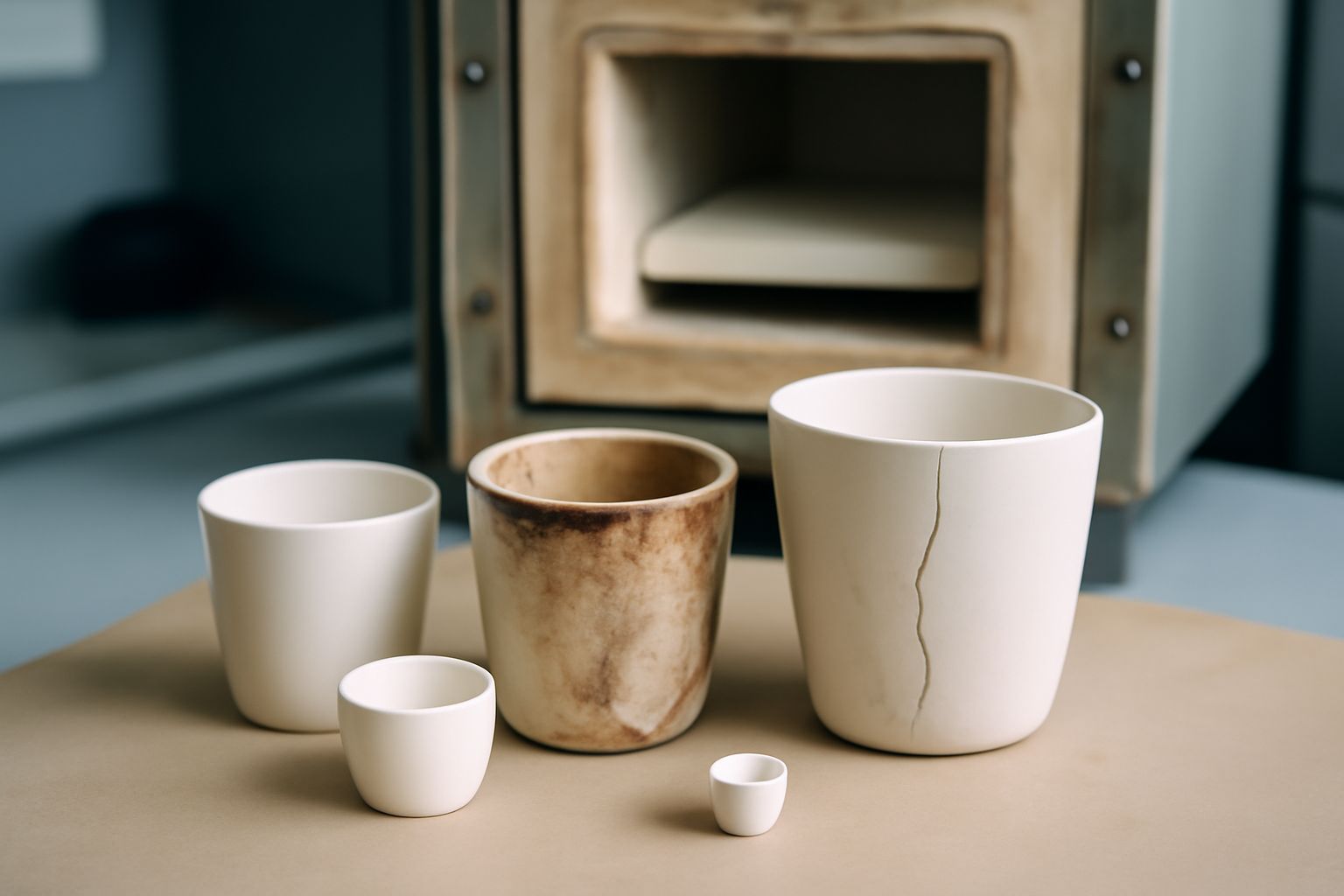Your cart is empty.
shop now
Your cart is empty.
shop now
Cracked crucibles, sample contamination, and equipment mismatches slow down important laboratory work and raise costs for researchers or industrial labs.
You can solve common crucible problems by warming them gradually, confirming precise sizing for your equipment, cleaning after each use, and choosing custom solutions if standard products no longer work in your process.

I see that most of these issues can be managed with easy, direct actions and some preventive care. Small habits make laboratory testing more efficient and lower the cost of frequent equipment replacement.
Sudden temperature changes or careless heating often break even high-quality crucibles. This leads to ruined samples and lost time for every experiment.
Most cracks are caused by thermal shock. Prevent them by preheating the crucible slowly, using uniform heating, and choosing materials with high thermal resistance such as alumina or platinum.
| Common Cause | Solution | Tips for Labs |
|---|---|---|
| Thermal Shock | Preheat and raise temperature stepwise | Use a slow ramp (thermal shock info) |
| Uneven Heating | Avoid open flame and use ovens with good air flow | Check oven calibration and airflow |
| Improper Material | Select high-thermal-stability crucibles | Choose alumina or platinum for tough jobs |
| Mechanical Stress | Handle only when cool and with tongs | Avoid bumps and sudden cooling |
Thermal shock is a real threat to any crucible. I always let mine come up to temperature gradually and never place them from cold storage into a hot furnace. Reading glassware and ceramic guides helped me avoid expensive breakage and keep testing schedules on track.
A mismatched crucible can stick, cause bad heating, or even damage the sensor plate in your analyzer. Running a test with the wrong size always brings risk.
If a crucible is not compatible, check specifications, measure diameter and height, and order from suppliers with clear sizing options. Custom crucibles fix ongoing compatibility issues for non-standard devices.
| Compatibility Issue | Immediate Solution | Long-Term Fix |
|---|---|---|
| Pan Stuck in Holder | Remove gently and clean debris | Switch to correct size |
| Poor Thermal Contact | Adjust placement and check contacts | Request reference sample from supplier |
| No Standard Model Available | Test with closest size | Order custom-made crucible(equipment info) |
| Wrong Wall Thickness | Use for low-risk tests only | Custom thickness for ideal fit |
Measuring is step one. I always check every part of my equipment before ordering. For unique systems or updated methods, custom crucibles have saved me time and trouble, especially for small batches in precision material testing workflows.
Neglect and rushed cleanup wreck even the best products. Dirty, poorly maintained crucibles quickly lead to failed tests and extra costs.
To extend crucible life, wash after every use, remove all residue, dry thoroughly, and store in a clean dry place. Inspect for cracks or stains before each next use.
| Step | Why Important | How to Do It |
|---|---|---|
| Cleaning | Prevents contamination and buildup | Use solvent, brush, and dry with clean cloth |
| Inspection | Find cracks, chips, or wear | Hold up to light, rotate for full view |
| Storage | Avoids shock and dust | Use padded, dry containers |
| Regular Replacement | Stops weak pans from harming equipment | Set a service cycle (refractory info) |
I found that sticking to a checklist cuts costs and boosts test reliability. For hard-to-clean residues, soaking or gentle heating works best, but avoid using metal tools that can scratch surfaces. After hundreds of cycles, some wear is normal, so consistency in review matters.
Even trace contamination makes scientific results or industrial samples unreliable. Some residues remain invisible but can ruin the whole next batch.
If a crucible is contaminated, use chemical or thermal cleaning methods recommended for the material, and replace crucibles that cannot be fully restored to keep experiments accurate.
| Contamination Type | Cleaning Method | When to Replace |
|---|---|---|
| Organic Residue | Burn out at moderate heat | If stains remain |
| Inorganic Scale | Soak in weak acid, then rinse (acid cleaning) | If corrosion marks or pitting exist |
| Unknown Substances | Try both heat and chemical wash, dry thoroughly | If unsure, replace for critical work |
| Persistent Odor | Repeat heating and open-air drying | Replace if odor remains strong |
I avoid reusing stubborn or damaged crucibles for sensitive jobs like trace analysis. Sometimes, the only way to protect accuracy is to recycle old pans and begin with clean, certified products, especially for high-stakes experiments.